Chapter 8. Papcastle Families
References to data found in the censuses are indicated for example by C1851. All ages must be approximate since individuals reporting to census enumerators tended not to be very accurate.
THE DYKES FAMILY [1]
The old histories of the county naturally gave great prominence to the landed gentry. Papcastle, although a manor in itself, belonged to the Dykes family, later the Ballantine-Dykes. So although the Dykes did not live in Papcastle, their control over the manor would have been substantial until well into the 20th century. It is suggested that the “del Dykes” name comes from Dykesfield on Hadrian’s wall which was the ancient residence of the family. It is further suggested that the family were here before the Norman conquest, but after several marriages, moved to Wardhall. A deed, undated, conveys land at Burgh, and by deduction from the names is estimated to be about 1272. The long history of the family is traceable through to the present day. The change to Ballantine-Dykes came in 1764 when Lawson Dykes married Jane, daughter and heir of John Ballantine.
The SKELTON FAMILY [2]
The Skeltons are traced back to Armathwaite Castle, with a deed of 1391. Richard Skelton sold that estate in 1712. A junior branch of the family were at Branthwaite, where the Hall eventually passed to Henry Skelton, a general and governor of Portsmouth in the early 1700s. Henry’s life was saved by his aide-de-camp Captain James Jones . A grateful Henry left Branthwaite to James on condition that he adopted the name Skelton. A son of James was Arnoldus, born 1750 who assumed the surname Skelton in 1774. He married in 1775, Elizabeth Hicks whose father William of Whitehaven owned the Camp Farm estate and Westworth in Papcastle. So Arnoldus and Elizabeth acquired Westworth. Arnoldus’s son Daniel inherited but died in 1869 and his widow in 1876. Westworth then passed to Henry face=”Book Antiqua”>s widow, Maria who was also known as Betty. Maria lived in Papcastle until early 1870 [C1871 she was 82] when Westworth was sold to Thomas Harris ,1876 [3]. So Skeltons were in the village for over 100 years.
The HARRIS family [4],[5]
The Harris Thread business began around about 1800 when two cousins began a weaving shop in Eaglesfield: they were Jonathan (1783-1869) and William (1782-1829). It was a successful venture enabling them to take a big step and purchase the Low Gote Mill in Papcastle around 1808. In 1820 a building later incorrectly known as the Hospice was erected for drying the flax and in 1834 the Derwent Mill was built to accommodate the expanding linen business. Water was supplied to the mill from the Gote Mill Race, the course of which can still be traced today. Since it seems that all the family connected with the flax and thread industry chose to live in Papcastle, it is useful to chart their movements. Jonathan (I) 1729- ? was the father of Jonathan II.
| Residences | Information Source | Notes | ||||
| 1st Generation | (1) | 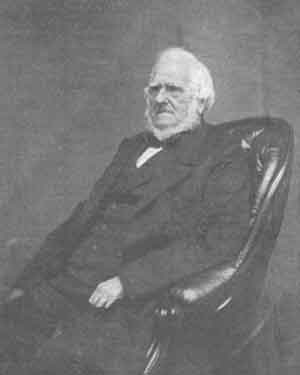 JONATHAN II 1783-1869 Was at Low Gote Mill from 1808 |
WELL HOUSE ,
SUNNYSIDE, GREY ABBEY, (originally WOODBANK) |
Tithe 1838 ,
C1851 Present here C1861 age 77 |
Ownership so presumed residence
Daughters lived on here Esther until 1892, Mary 1902 |
|
| 2nd generation | (2) | 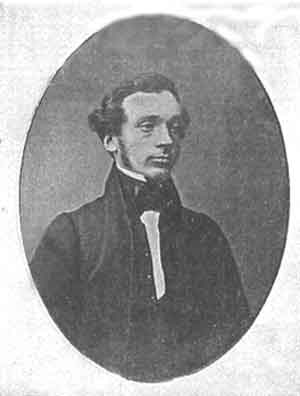
JONATHAN (III) |
LINDENSIDE | C 1851 | Moved from Brigham C1841; sister Alice lived on here to 1923 |
|
| 3rd generation | (3) | 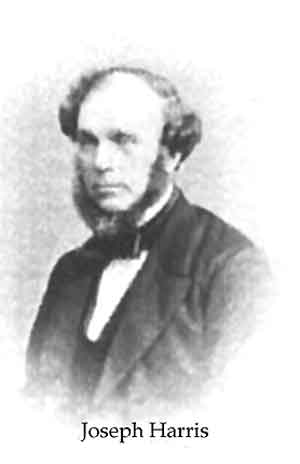
Joseph HARRIS |
DERWENT LODGE | but only two servants present | Widow Eliza here to C1891 then probably in with others at Grey Abbey | |
| (4) | Jonathan JAMES 1841-1915; unmarried until 1893 aged 51 |
LINDENSIDE
GREY ABBEY |
C1871
C1901 |
With wife Emma neé Henderson and brother in law James Henderson | ||
| 4th generation | (5) | 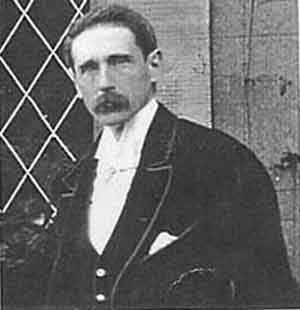
Thomas Mason HARRIS 1849-1935; MD from 1915 |
WESTWORTH 1876 Sold 1934 | C1901 | From Shatton Hall C1871 | |
| (6) | Thomas WILLIAM 1882-1955; MD from retirement of T.M.H |
SUNNYSIDE Then GREENBANK WEST CORNER COTTAGE |
From son. ANGUS (b 1917 still in contact) |
After 1901 |
A very full account of the Harris Enterprise appears on the Cockermouth Tourist Information Centre Official Website at www.cockermouth.org.uk under the title “Harris Mill and its History”
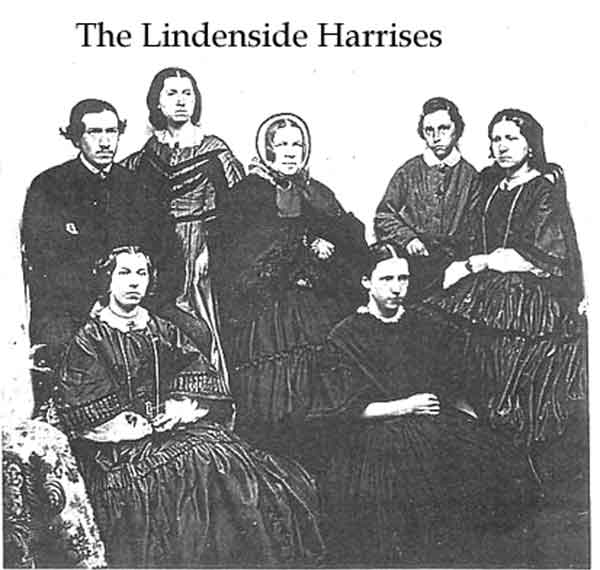
From l. to r.
Standing: Jonathan James (1841-1915) Alice Hall 1840-1923, Sarah Hall 1811-1891, Joseph Henry, Sarah Maria 1839-1920;
front: Mary Jane (Polly) Lucy Esther
THOMAS KNIGHT: (1775-1853) [6]
Huddleston & Boumphrey’s Cumberland Families and Heraldry [7], p. 192 mentions that Thomas Knight, originating from Shropshire, settled first at Keswick and then at Papcastle, where in 1816 he was building the mansion to be called The Mount. The Keswick connection is confirmed as the birthplace in 1798 of Thomas and Isabella’s first child, also named Thomas. The extended Knight family had become rich, based on the profits of an iron foundry and owned several large properties. Among them was Henley Hall, near Bitterley in Shropshire, which was eventually inherited in 1852 by John Knight (b. 1803), the third son of “our” Thomas. But many of Thomas’s family seem to have lived there before this date, as genealogical records give this as the address of all of the Knight children.
Thomas Knight is a forgotten figure, absent from biographical dictionaries and barely mentioned in works on the history of mathematics. Nevertheless, during 1809-18, he wrote a considerable number of papers on mathematics and its applications. In Cambridge, the “continental” calculus was not introduced into the Mathematical Tripos examinations until 1817, the year of Knight’s last published paper; and there is no knowledge of any contact between Knight and the Cambridge reformers. But Knight’s writings show that he was familiar with works of French analysis, then little-read in Britain, and that he was an accomplished practitioner of both analysis and geometry, with a particular liking for infinite series. (The reference quoted [6], contains some abstract mathematical statements which most readers will be glad have not been included here.)
Knight’s papers were quickly forgotten. In part, this was due to a lack of true originality, to his use of rather cumbersome notations, and to the apparent lack of utility (or absence of explanation of utility) of much of his work. But a more cogent reason was the sad lack of interest in analytical mathematics in England at this time. Most of the fellows of the Royal Society were hostile to the presentation of complicated calculations which few could understand. Knight lacked the power base of a university appointment; and his sending manuscripts from Cumberland was a far less effective way of making a mark that appearing in person in London to mingle with his mathematical peers. Yet Knight deserves to be remembered as one of very few English mathematicians of his day who was able and willing to engage with continental analytical mathematics, and to read the impressive but neglected analytical work of William Spence of Greenock.
The picture that emerges of Thomas Knight is of a well-to-do English country gentleman with an amateur interest in science and mathematics, a large estate and a large family. During the second decade of the nineteenth century, his mathematical attainments compared favourably with those of any of his compatriots, although his published work had little lasting impact. He was remarkably well-read in continental mathematical works; he tried to extend the work of the French analysts, especially Arbogast, and that of the Scot William Spence; and he was particularly interested in series expansions. His scientific interests led to papers on the theories of capillarity and gravitational attraction, and he seems to have possessed and used an astronomical telescope. There is an interesting letter from John Dalton in 1822, [8]; this indicates the difficulties of astronomical observing in West Cumbria. This is still a problem today, with frequent cloud cover, and now stray street lighting and also much more heating giving a disturbed atmosphere if trying to view over the town.
It is probably no coincidence that Thomas Knight’s mathematical activity ceased shortly after he moved to Papcastle: the management of the estate, and his already large and growing family, must have been major distractions. He must also have been discouraged by the Royal Society’s decision not to publish his manuscript papers of 1817-18. Thomas Knight lived into old age, and at least three of his children died before him. Robert (1804-1834) died quite young; the lawyer Thomas died in 1850; and Captain James Knight (1807-1836) “fell gloriously… heading the storm[ing] party against the enemy’s entrenchments on the heights of San Sebastian” in Spain, during the Carlist war. In his will, Thomas Knight left all his estate, apart from a small bequest to a servant, to two of his daughters, Henrietta Mansfield and Maria Knight, the former a widow and the latter unmarried.
MARIA DUNDAS, Lady Callcot [9]
Among the famous people who have been born in Papcastle, perhaps one of the most widely travelled was writer, illustrator and painter, Lady Callcot. She was born Maria Dundas in 1785, the daughter of George Dundas, a Rear-Admiral in the Royal Navy.
Like many distinguished “Papcastrians”, Maria and her family were frequently on the move and it is uncertain how long she spent in the village. However, her love of nature, her artistic temperament and her sense of adventure must surely have been awakened by the invigorating environment of her birthplace!
She travelled the high seas with her father, who eventually secured a good shore job in India . There, in 1809, Maria married a Royal Navy captain, Thomas Graham. In the two years or so that she lived in India, she developed a great appreciation of its local culture, customs and language. This was recorded in her first book. Journal of a Residence in India, illustrated with her own sketches.
In 1822, her first husband died on board the ship he was captaining to Chile. She resolutely persevered alone in Valparaiso and later published her experiences in Journal of a Residence in Chile during the year 1822.
Her next foreign sojourn was in Brazil where she spent some three years and became tutor to the daughter of the ruling Emperor. Of course, a further Journal was one of the almost inevitable outcomes. ‘
On returning to England in 1826 she soon found herself at ease with the artists and intellectuals of the period. This was in London rather than in Papcastle, the cultural renaissance of which perhaps has had to await the re-opening of the Village Reading Room!
In 1827 she married the Royal Academy painter, Augustus Callcott and it was as a consequence of his knighthood that Maria became Lady Callcott. However, sadly, happiness was not to be hers for long and she died in 1842 at the age of 57. The girl from Papcastle left a very extensive literary output and she succeeded in ensuring another claim to fame for the village. However, the question remains: in which house was she born?
THE WAUGH FAMILY [10]
The Waugh family were associated with Papcastle for roughly 100 years at the Burroughs.
1851: Edward Waugh, age 34, so born about 1817 appears for the first time in C1851 as an Attorney at Law and assistant Clerk to the County Court, Cockermouth. He was born at Irthington near Brampton C1841 does not locate him. He had a wife Mary Jane Liddell, six years younger than him from Drumburgh and one daughter Catherine, age 4 already at school. His mother-in-law and two servants are also listed. It is unclear when the Burroughs was built. There are buildings shown on this site in 1838, owned by Humphrey Senhouse, occupied by Joseph Clarke [11], but with a different configuration entirely so that sometime before 1864 [12] there seems to have been a major rebuild. Additionally there is a (damaged) date stone for 1875 over the present front doorway suggesting further addition at this date.
1861: there are four more children, Edward (Lamb) b. 1852, Anna b. 1854, Charles b. 1858 and Alice (Miles) b. 1860. Catherine, now 14, is traced to a school in Abbey St., Carlisle, one of 13 pupils under a governess, two assistant governesses and four servants. [C1861]
1871: Catherine is now back home, but Edward, age 19, is away, traced to a cousin’s in Wimbledon. [C1871]
1875: according to the date stone, some addition was made to the house.
1880: Edward (senior) was elected as MP for Cockermouth, (The borough had had two MP until 1868.)
1881: Edward is found at Queen Anne’s Mansions, Westminster (though not listing himself as a Member of Parliament!); Mary Jane, Anna, Alice and Charles (now a mining engineer) are with him [C1881]; young Edward (age 29), in Papcastle, is now also recorded as a solicitor and Registrar of the County Court.
1885: The Redistribution of Seats Act meant that Cockermouth no longer had its own MP the area was absorbed into a larger one which eventually became the Workington constituency.
1886: Edward L bought the field in Cockermouth on which the Drill Hall was built. [See also Chap 15 Charities]
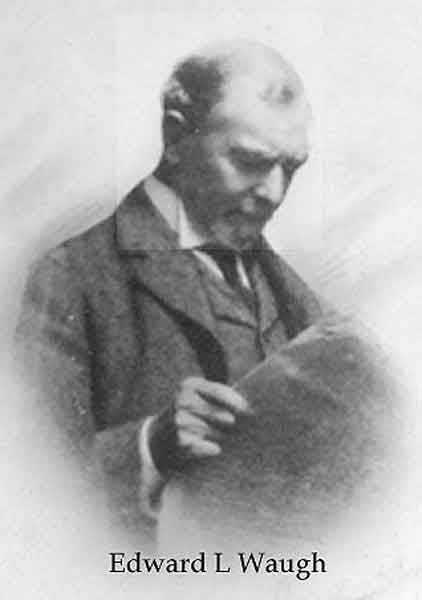 As a prominent citizen, though not now an M.P., Edward was often at the forefront of any activities. Thus he presided at the free dinner at the Drill Hall for the working people of Cockermouth, the Goat, Papcastle and Belle Vue to celebrate Queen Victoria’s Jubilee. He was received with loud and continued cheers; in his speech he made much of the improvement of the social conditions of the working classes in the period 1837-1887, though this might not be seen by later historians as down to the Queen herself, so much as to the parliamentarians who fought for this. There were several other functions for the Jubilee and also the opening of the new bridges Waterloo”(or Brewery or Barrel) bridge, South St footbridge (or Cocker Lane or Quaker bridge), Victoria Bridge (Lorton Street), and planting of trees in the main thoroughfares. It is interesting to note that all these activities were funded by public subscriptions [13] (Note: The bridge to the memorial gardens (Harris bridge) had been opened in1875.)
As a prominent citizen, though not now an M.P., Edward was often at the forefront of any activities. Thus he presided at the free dinner at the Drill Hall for the working people of Cockermouth, the Goat, Papcastle and Belle Vue to celebrate Queen Victoria’s Jubilee. He was received with loud and continued cheers; in his speech he made much of the improvement of the social conditions of the working classes in the period 1837-1887, though this might not be seen by later historians as down to the Queen herself, so much as to the parliamentarians who fought for this. There were several other functions for the Jubilee and also the opening of the new bridges Waterloo”(or Brewery or Barrel) bridge, South St footbridge (or Cocker Lane or Quaker bridge), Victoria Bridge (Lorton Street), and planting of trees in the main thoroughfares. It is interesting to note that all these activities were funded by public subscriptions [13] (Note: The bridge to the memorial gardens (Harris bridge) had been opened in1875.)
1891: Edward died age 74, so leaving his widow (68), Edward L. and Alice still in residence with four servants. [C1891]
1893: Neddy
The Waugh Memorial Fund was opened to honour the town’>s solicitor and last M.P. and in January 1893 purchased land west of the Congregational Church, extending from Main Street to the Derwent, for £450 and it was hoped the council would erect a library here. The library did not materialise until the turn of the century, (funded by Andrew Carnegie, the American philanthropist who provided many libraries throughout the UK). Meanwhile a scheme was put forward for a memorial clock. There were delays because of arguments about the site should it be placed in the Market Place or at Station Street corner, where the council were concerned that it might interfere with the town sewer? In April, the committee decided to go ahead with the clock scheme, although the site was not yet fixed, ordering from W. Potts and Sons of Leeds “a 40 feet high column, the clock to have faces 4 feet by 3 feet and a 2 hundredweight bell to strike the hours, the whole to be in iron, bronze and gold.” A wooden structure was erected on the Main Street site to give some idea of the project. Eventually the memorial was erected here and Neddy became one of Cockermouth’s most prominent features.
However, as the motor age advanced, Neddy became a traffic hazard, especially as it was not centrally placed in Main Street which made it more difficult for cars to get round it.
In May 1932, the Council decided the clock must come down and two months later suggested a new public clock. By late August, Neddy had gone, the dials and movement sold to a Leeds man for a mere £4..10s. The Council decided to fix the explanatory plaque from the clock to the front of the Court House and to place the bell and a large photograph of Neddy in the library. [14]
1901: Mary Jane has died, leaving just Edward and Alice.
1917: Edward L. died leaving just Alice. It seems he did not marry.
1918: Alice buys the Manor House [15]
1946: Alice died at age 85 so completing approximately 100 years of Waughs in the village.
The Burroughs was sold to J. H Slater and subsequently (probably 1969), split into two properties owned by the Yules and the Fergusons.
THE MOSES FAMILY [16]
This family, although of more humble origins, has also long association with the village.
William: born about 1812 in Stableton (not identified Stapleton is a parish N. of Brampton, next to (and S.W. of Bewcastle)) was living in the village in 1838 in one of the cottages around Dover’s Lane corner. [17] His occupation was a slater, his wife, Mary had come from Workington. There were three sons, all starting life as slaters.
Joseph: born 1836, seemingly remained a bachelor and was still living in the village in 1901, having remained a slater all his life.
John (I): born 1839, married Jane in 1861 and had two sons and a daughter. Initially a slater, he was responsible for slating the roof of Dovenby School, Cockermouth Brewery, All Saints Church and “The Burroughs in Papcastle (about 1880). He was infamously committed for trial in 1869 for the murder of Abraham Strike, whose body was found in the River Derwent. He was however acquitted. Later [C1891], he became Head Water Bailiff on the River Derwent.
William: born 1860 no information
Joseph, born 1864
Mary Ann: born 1865, married a man named Fallows, about 1883 and had five children. Of these –
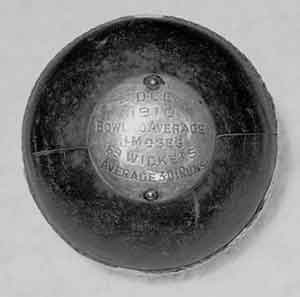
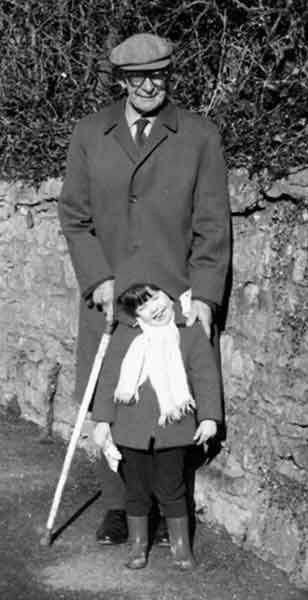
John (II): born 1884, started in the employ of Miss Waugh at the “Burroughs”, under the Head Gardener, a Mr Tom Hunter. He went to the USA in 1902 [18] were he met his future wife, Mary Gannon and married her in Boston in 1905. He returned to UK in December 1905 [19] They lived in Orchard Cottage, then Greenbank. He was a notable sportsman, – a commemorative cricket ball records his achievement of 69 wickets in 1910 at an average of 3.01. He died in 1975. [20]
John Moses (III): born 1910 in Lindenside Cottage, later lived at Dover’s Lane, Derwent Cottage (c. 1955) and then Castle Gardens where he died in 1991. His son – John Moses (IV): was born in 1941 in Lindenside Cottage, but moved from Papcastle in 1962. He became a Director of Millers Footwear at Derwent Mill in Cockermouth.